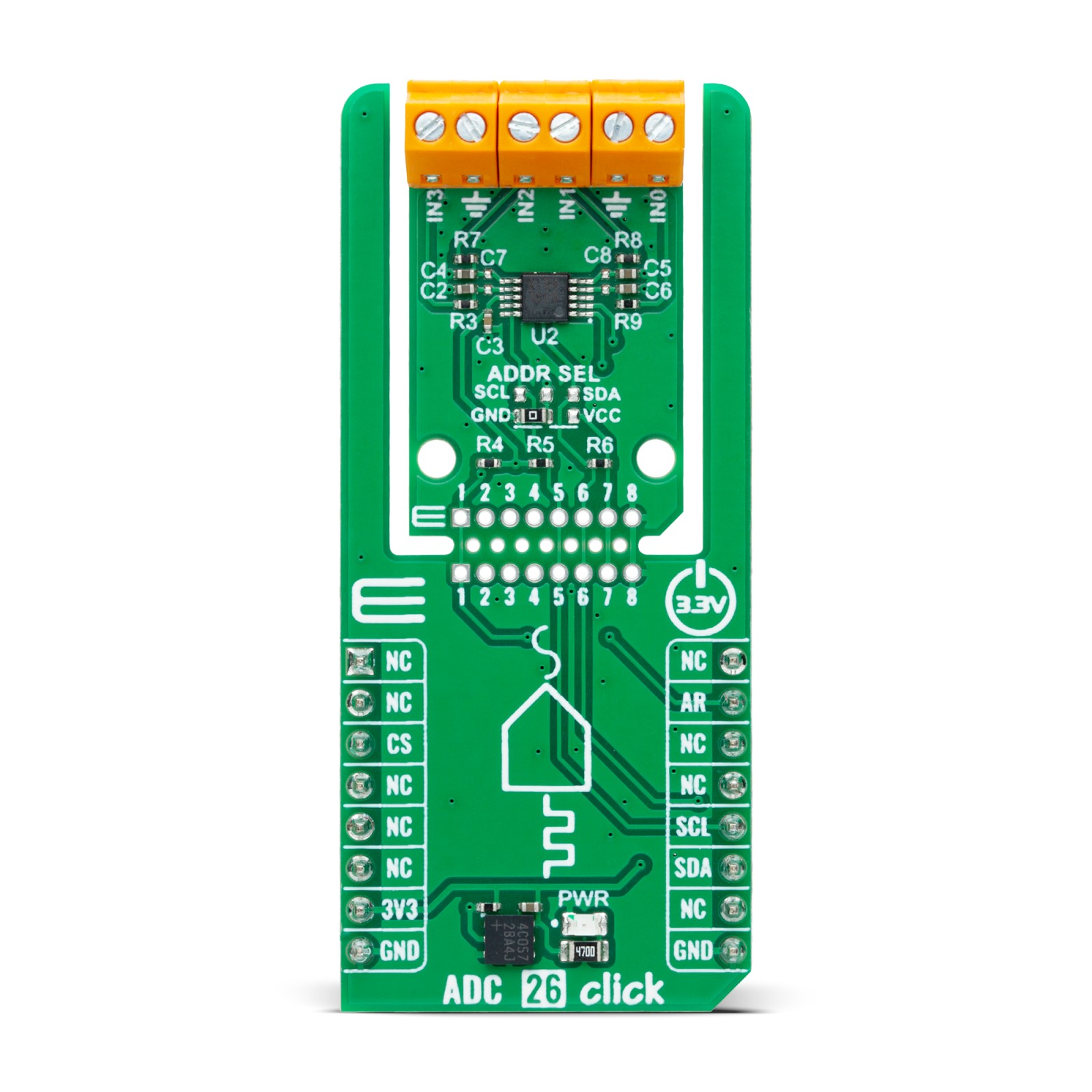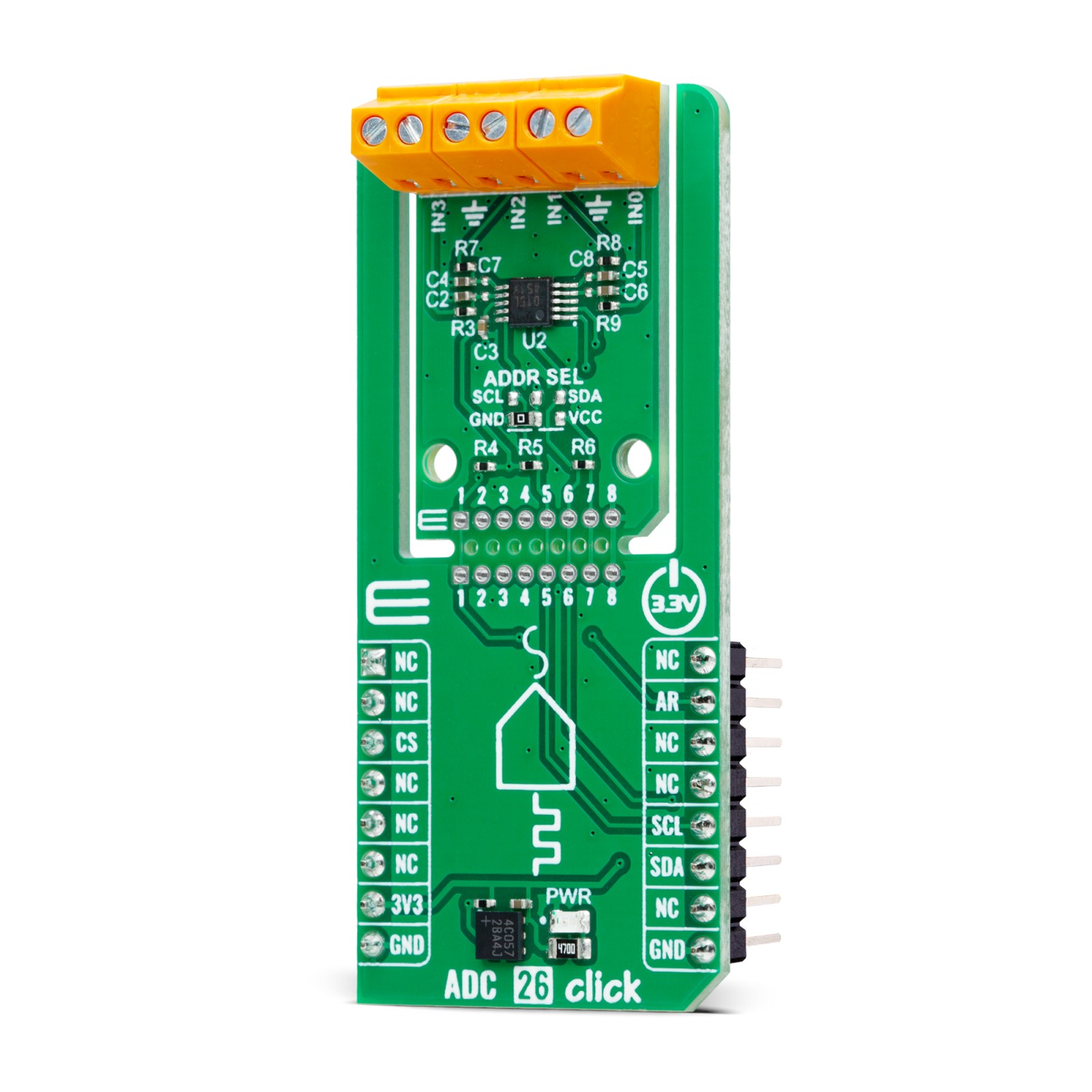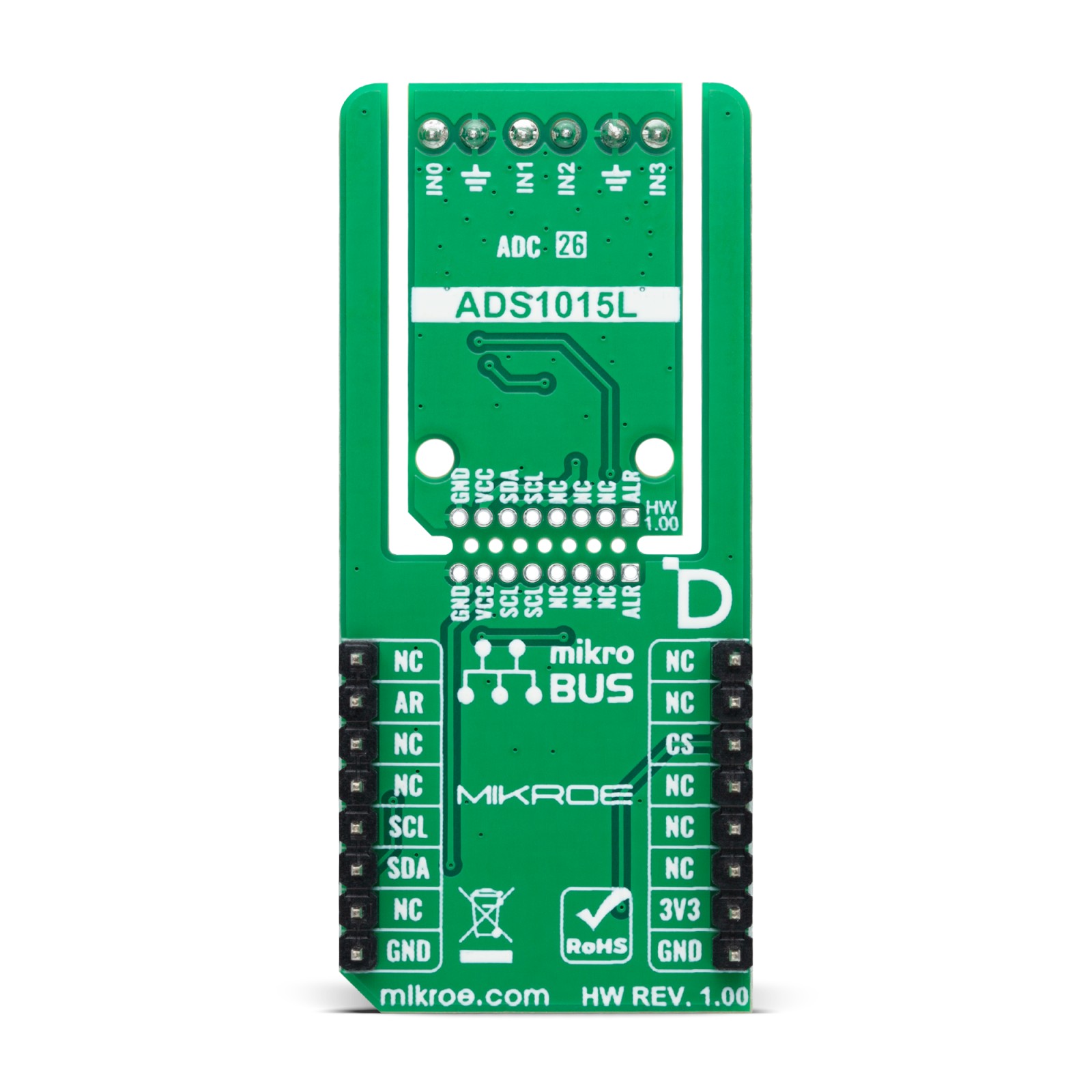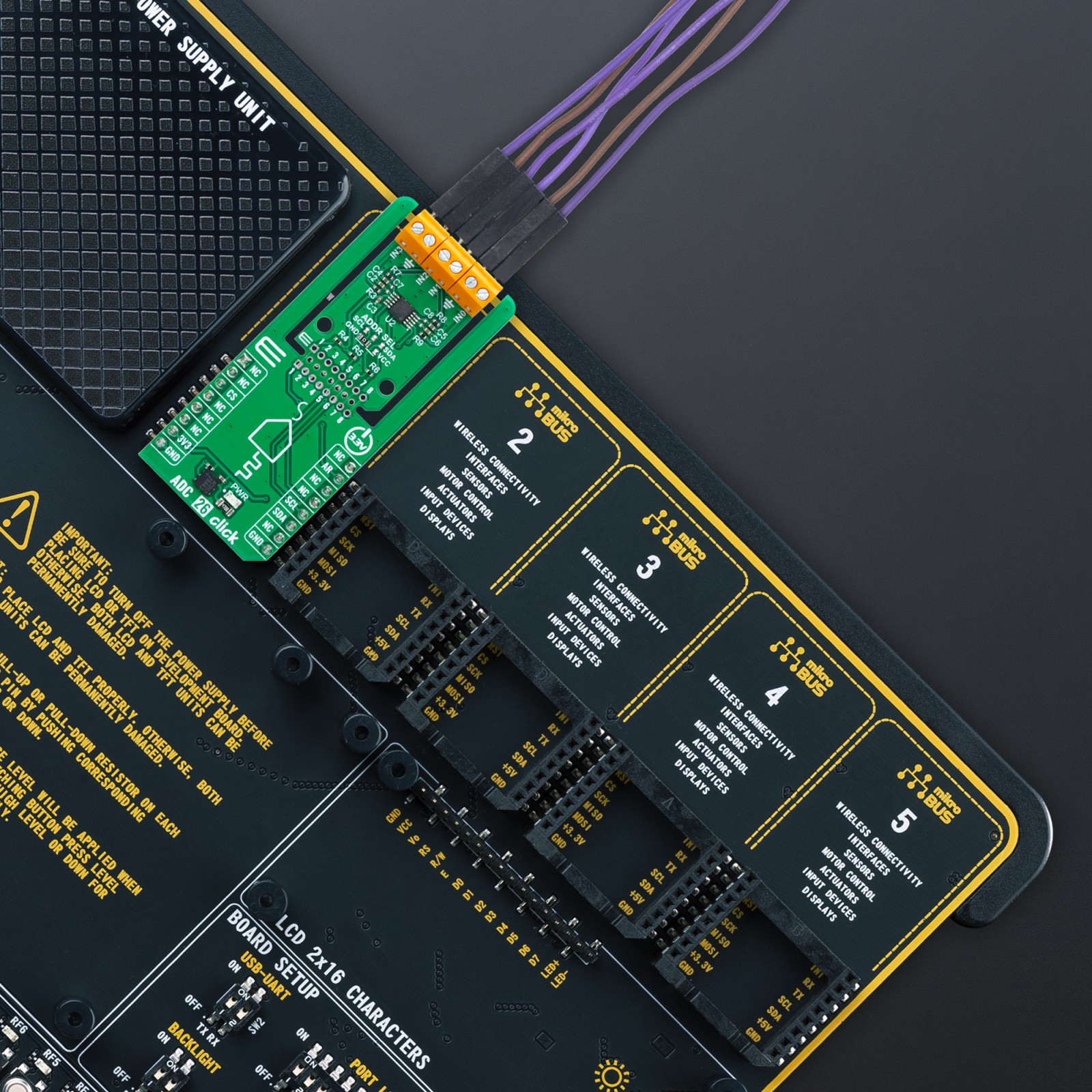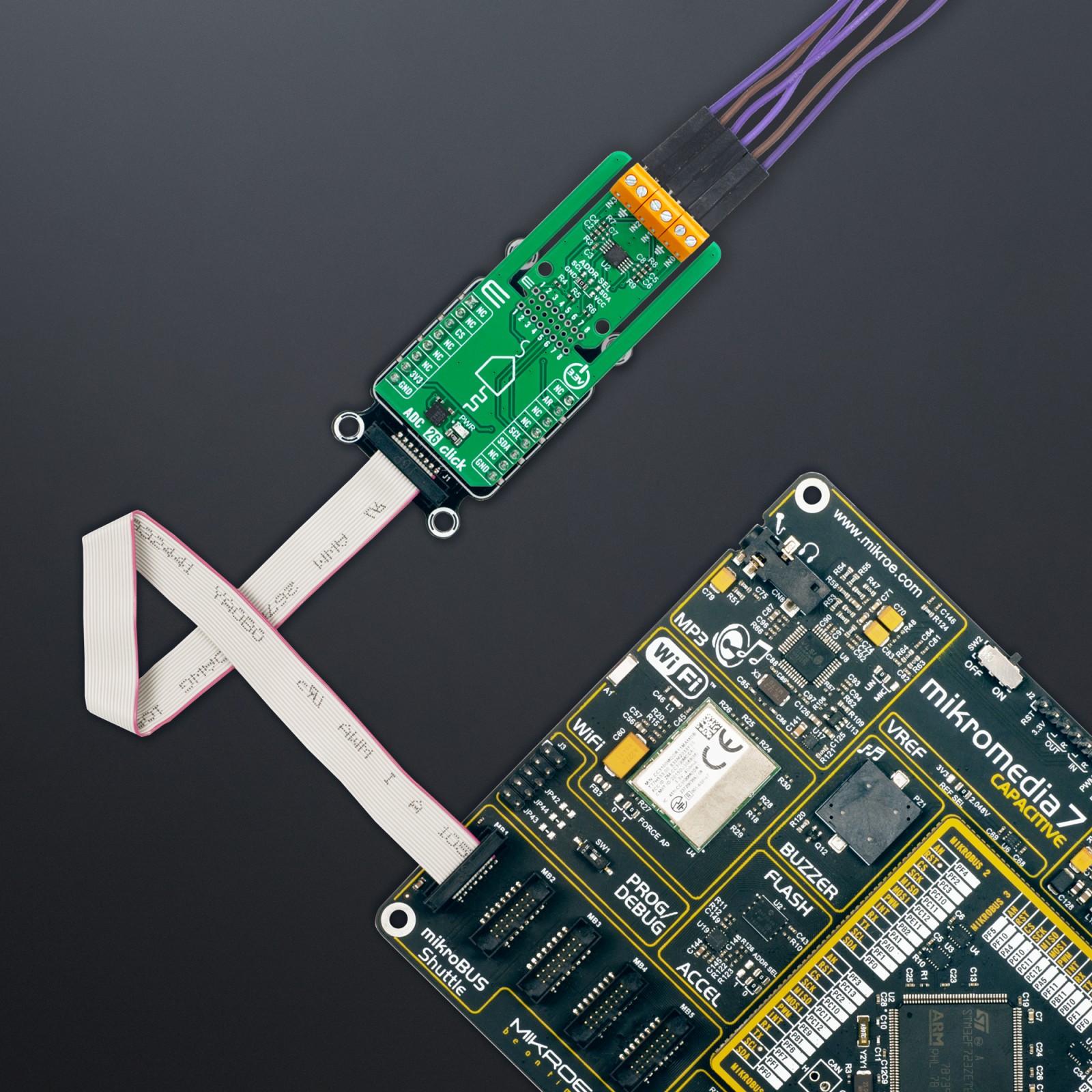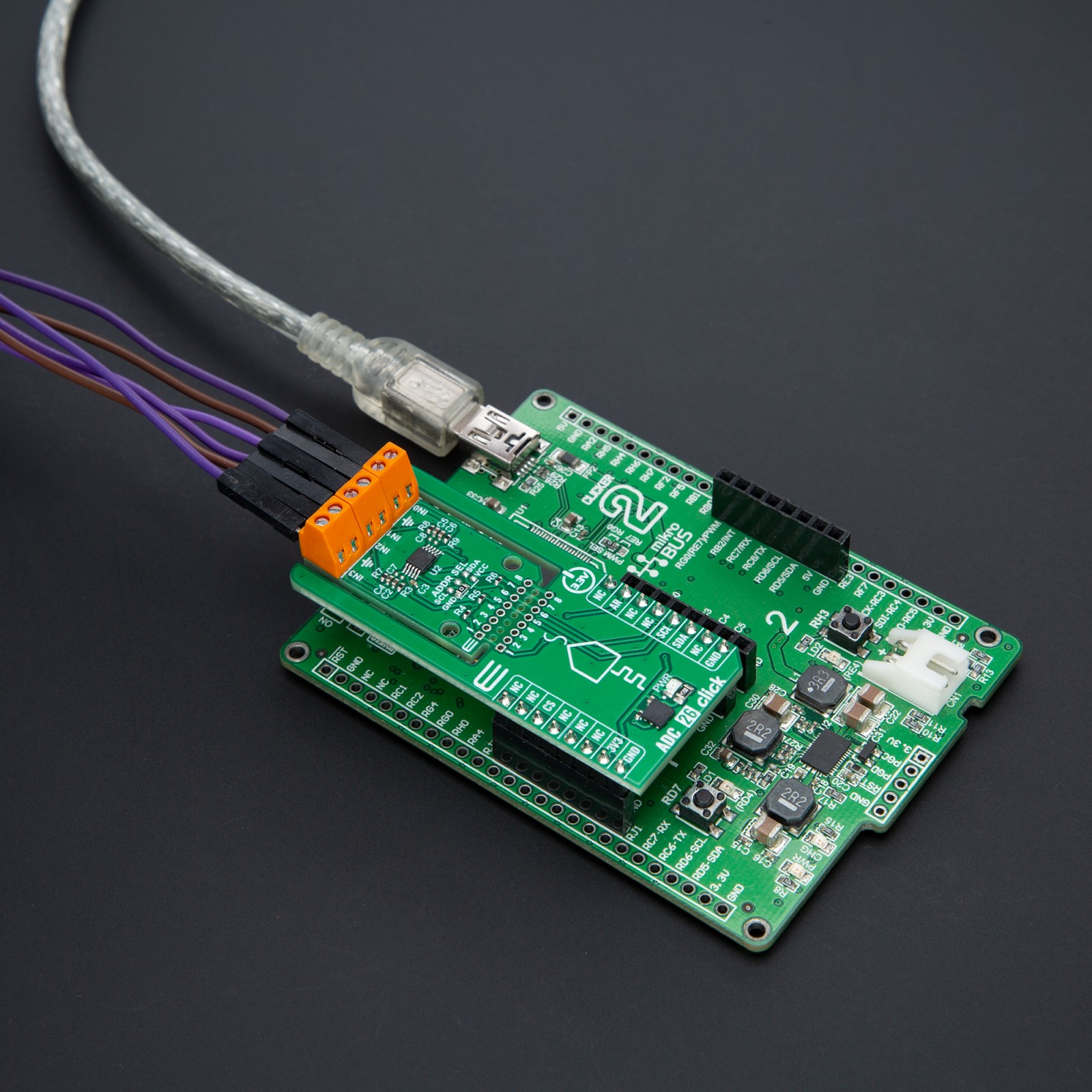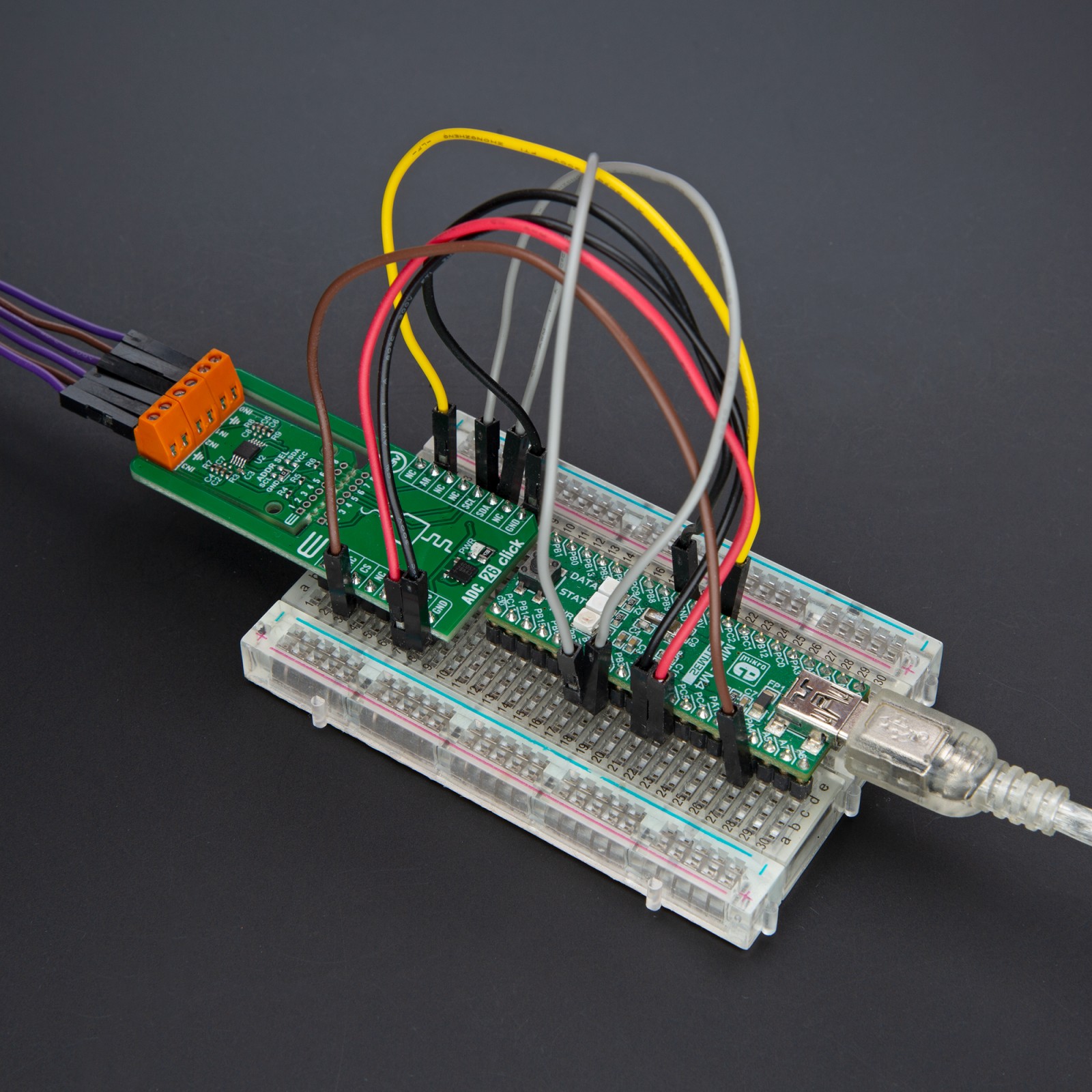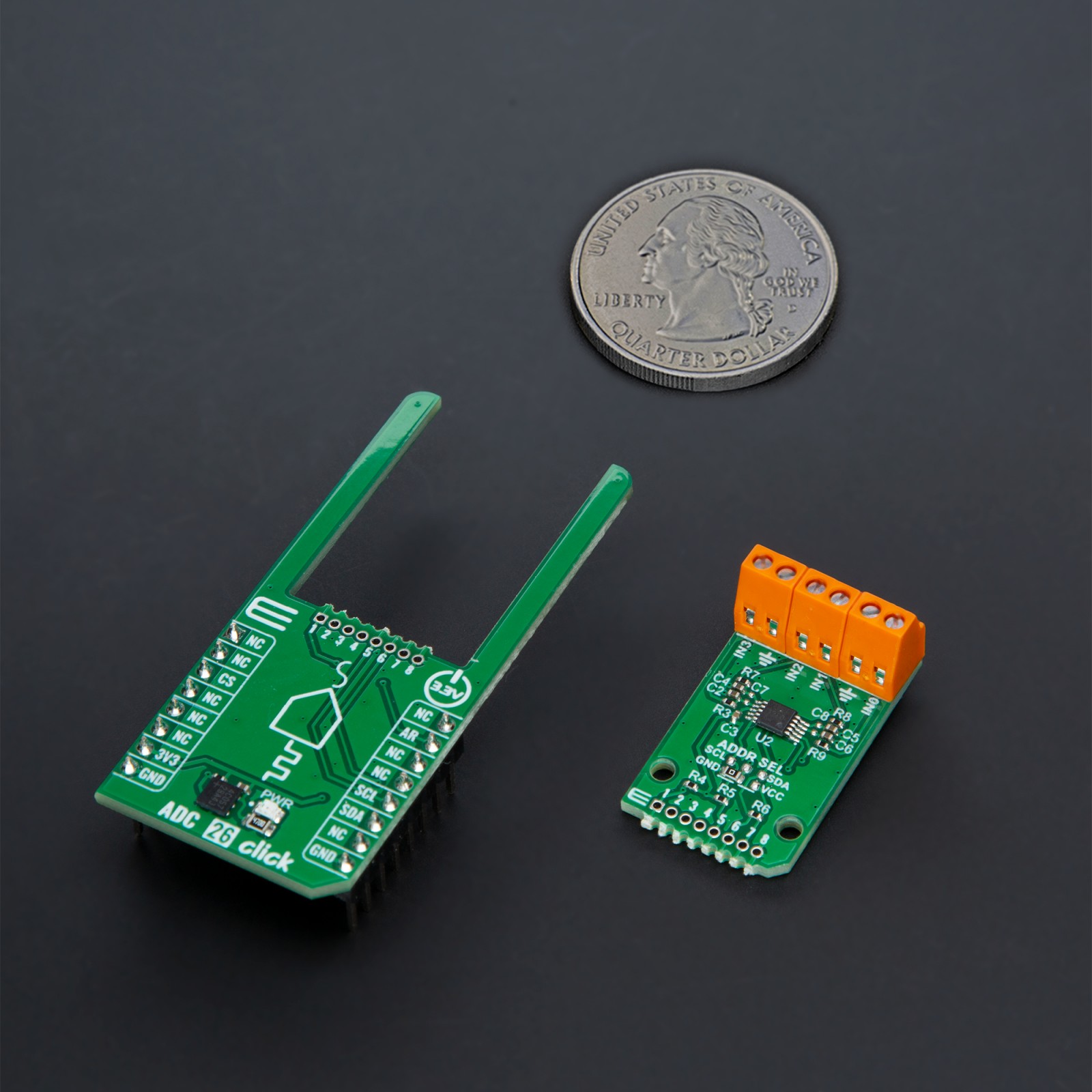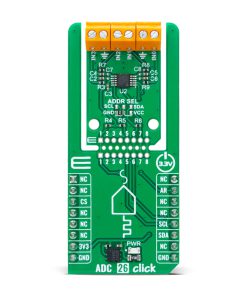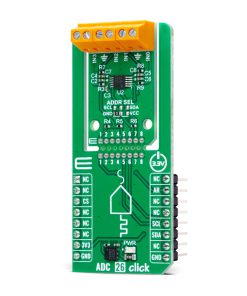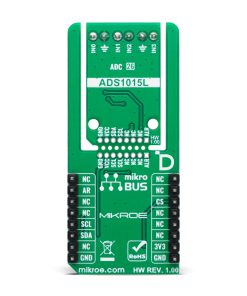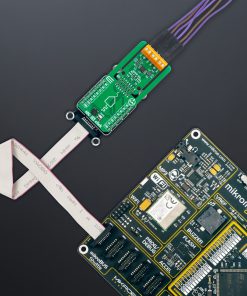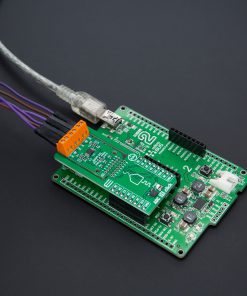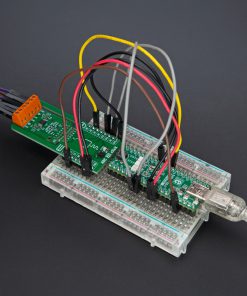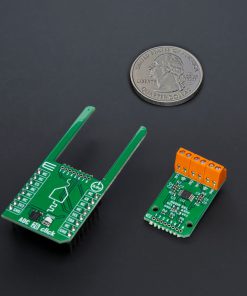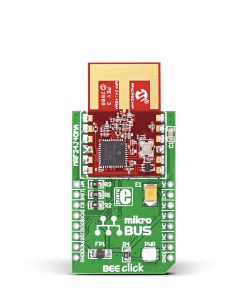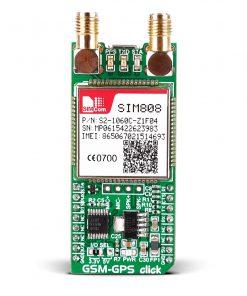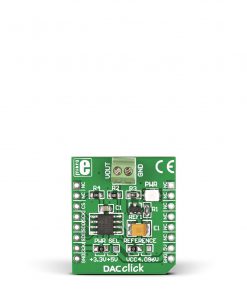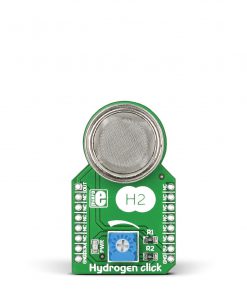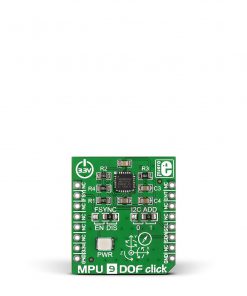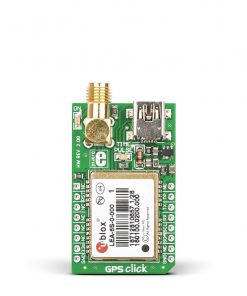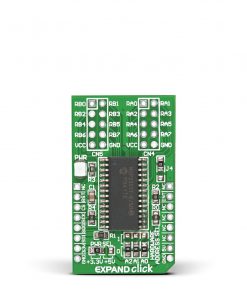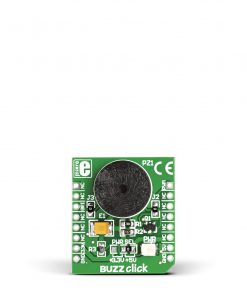ADC 26 Click
R350.00 ex. VAT
ADC 26 Click is a compact add-on board for precise analog-to-digital signal conversion. This board features the ADS1015L, a low-power 12-bit ADC with an I2C-compatible interface from Texas Instruments. The ADS1015L features a ΔΣ ADC core with an internal voltage reference, programmable gain amplifier (PGA), and digital comparator, capable of measuring differential signals with a flexible input range from ±0.256V to ±6.144V at up to 3300 samples per second (SPS). It supports single-shot and continuous-conversion modes, offering both energy efficiency and real-time performance. The innovative Click Snap design allows for the detachment of the main IC area for versatile implementation. Ideal for system monitoring, ADC 26 Click excels in applications such as supply voltage tracking, current sensing, temperature measurements, wearables, and personal electronics.
ADC 26 Click is fully compatible with the mikroBUS™ socket and can be used on any host system supporting the mikroBUS™ standard. It comes with the mikroSDK open-source libraries, offering unparalleled flexibility for evaluation and customization. What sets this Click board™ apart is the groundbreaking ClickID feature, enabling your host system to seamlessly and automatically detect and identify this add-on board, alongside a Click Snap feature introducing a new level of flexibility and ease of use.
Stock: Lead-time applicable.
| 5+ | R332.50 |
| 10+ | R315.00 |
| 15+ | R297.50 |
| 20+ | R286.30 |

